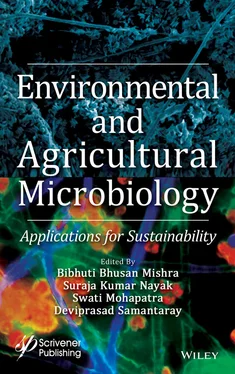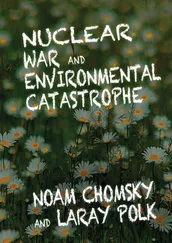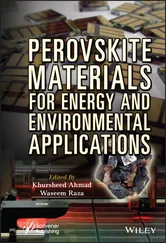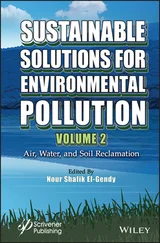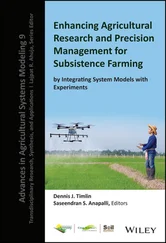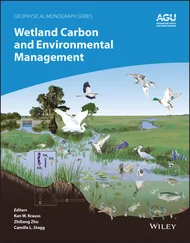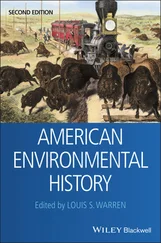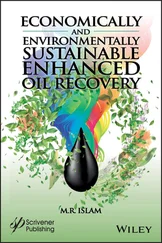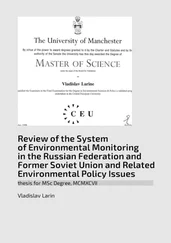43. Guzzi, G. and La Porta, C.A., Molecular mechanisms triggered by mercury. Toxicology , 244, 1, 2008.
44. Tchounwou, P.B., Ayensu, W.K., Ninashvili, N., Sutton, D., Environmental exposure to mercury and its toxicopathologic implications for public health. Environ. Toxicol. , 18, 149, 2003.
45. VCI, Copper history/Future , Van Commodities Inc, http://trademetalfutures.com/copperhistory.html, USA, 2011.
46. Davies, B.E. and Jones, L.H.P., Micronutrients and toxic elements, in: Russell’s Soil Conditions and Plant Growth , S.E.J. Russell and A. Wild (Eds.), p. 780, Longman Scientific & Technical, London, 1988.
47. Khodadoust, A.P., Reddy, K.R., Maturi, K., Removal of nickel and phenanthrene from kaolin soil using different extractants. Environ. Eng. Sci. , 21, 691, 2004.
48. Wong, J.P.K., Wong, Y.S., Tam, N.F.Y., Nickel biosorption by two chlorella species, C. Vulgaris (a commercial species) and C. Miniata (a local isolate). Bioresour. Technol. , 73, 133, 2000.
49. Nies, D.H., Efflux-mediated heavy metal resistance in prokaryotes. FEMS Microbiol. Rev. , 27, 313, 2003.
50. Harrison, J.J., Ceri, H., Stremick, C., Turner, R.J., Differences in biofilm and planktonic cell mediated reduction of metalloid oxyanions. FEMS Microbiol. Lett. , 235, 357, 2004.
51. Harrison, J.J., Ceri, H., Stremick, C., Turner, R.J., Biofilm susceptibility to metal toxicity. Environ. Microbiol. , 6, 1220, 2004.
52. Gutnick, D.L. and Bach., H., Engineering bacterial biopolymers for the biosorption of heavy metals; new products and novel formulations. Appl. Microbiol. Biotechnol. , 54, 451, 2000.
53. Fang, H.H.P., Xu, L.-C., Chan, K.-Y., Effects of toxic metals and chemicals on biofilm and biocorrosion. Water Res. , 36, 4709, 2002.
54. Gadd, G.M., Biosorption: critical review of scientific rationale, environmental importance and significance for pollution treatment. J. Chem. Technol. Biotechnol. , 84, 13, 2009.
55. De Philippis, R., Colica, G., Micheletti, E., Exopolysaccharide-producing cyanobacteria in heavy metal removal from water: molecular basis and practical applicability of the biosorption process. Appl. Microbiol. Biotechnol. , 92, 697, 2011.
56. Pal, A. and Paul, A.K., Microbial extracellular polymeric substances: central elements in heavy metal bioremediation. Indian J. Microbiol. , 48, 49, 2008.
57. Salehizadeh, H. and Shojaosadati, S.A., Removal of metal ions from aqueous solution by polysaccharide produced from Bacillus firmus . Water Res. , 37, 4231, 2003.
58. Gavrilescu, M., Removal of heavy metals from the environment by biosorption. Eng. Life Sci. , 4, 219, 2004.
59. Sundar, K., Mukherjee, A., Sadiq, M., Chandrasekaran, N., Cr (III) bioremoval capacities of indigenous and adapted bacterial strains from Palar river basin. J. Hazard. Mater. , 187, 553, 2011.
60. O’Toole, G.A., Pratt, L.A., Watnick, P.I., Newman, D.K., Weaver, V.B., Kolter, R., Genetic approaches to study of biofilms. Methods Enzymol. , 310, 91, 1999.
61. Gupta, P. and Diwan, B., Bacterial exopolysaccharide mediated heavy metal removal: a review on biosynthesis, mechanism and remediation strategies. Biotechnol. Rep. , 13, 58, 2017.
62. Gupta, P. and Diwan, B., Bacterial Exopolysaccharide mediated heavy metal removal: a review on biosynthesis, mechanism and remediation strategies. Biotechnol Rep. , 13, 58, 2017.
63. Alluri, H.K., Ronda, S.R., Settalluri, V.S., Bondili, J.S., Suryanarayana, V., Venkateshwar, P., Biosorption: An eco-friendly alternative for heavy metal removal. Afr. J. Biotechnol. , 6, 25, 2007.
64. Ahalya, N., Ramachandra, T.V., Kanamadi, R.D., Biosorption of heavy metals. Res. J. Chem. Environ. , 7, 71, 2003.
65. De Philippis, R., Colica, G., Micheletti, E., Exopolysaccharide-producing cyanobacteria in heavy metal removal from water: molecular basis and practical applicability of the biosorption process. Appl Microbiol Biot. , 92, 697, 2011.
66. Pereira, S., Micheletti, E., Zille, A., Santos, A., Moradas-Ferreira, P., Tamagnini, P., De Philippis, R., Using extracellular polymeric substances (EPS)-producing cyanobacteria for the bioremediation of heavy metals: do cations compete for the EPS functional groups and also accumulate inside the cell? Microbiology , 157, 451, 2011.
67. Vera, M., Schippers, A., Sand, W., Progress in bioleaching: fundamentals and mechanisms of bacterial metal sulfide oxidation—part A. Appl Microbiol Biotechnol. , 97, 7529, 2013.
68. Christine, L. and Mamindy, Y., Bioremediation of heavy metals in sediment, in: Bioremediation: Processes, Challenges and Future Prospects , J.B. Velázquez-Fernández and S. Muñiz-Hernández (Eds.), pp. 3–18, Nova science publisher, Hauppauge, New York, US, 2014.
69. Sand, W. and Gehrke, T., Extracellular polymeric substances mediate bioleaching/ biocorrosion via interfacial processes involving iron (III) ions and acidophilic bacteria. Res. Microbiol. , 157, 49, 2006.
70. Schippers, A. and Sand, W., Bacterial leaching of metal sulfides proceeds by two indirect mechanisms via thiosulfate or via polysulfides and sulfur. Appl. Environ. Microbiol. , 65, 319, 1999.
71. Ike, M., Yamashita, M., Kuroda, M., Microbial Removal and Recovery of Metals from Wastewater, in: Applied Bioengineering: Innovations and Future Directions , T. Yoshida (Ed.), pp. 573–595, Wiley Publisher, Weinheim, Germany, 2017.
72. Liu, S., Zhang, F., Chen, J., Sun, G., Arsenic removal from contaminated soil via biovolatilization by genetically engineered bacteria under laboratory conditions. J. Environ. Sci. , 23, 1544, 2011.
73. Pepi, M., Gaggi, C., Bernardini, E., Focardi, S., Lobianco, A., Ruta, M., Nicolardi, V., Volterrani, M., Gasperini, S., Trinchera, G., Renzi, P., Gabellini, M., Focardi, S.E., Mercury-resistant bacterial strains Pseudomonas and Psychrobacter spp. isolated from sediments of Orbetello Lagoon (Italy) and their possible use in bioremediation processes. Int. Biodeter. Biodegr. , 65, 85, 2011.
74. Żur, J., Wojcieszyńska, D., Guzik, U., Metabolic Responses of Bacterial Cells to Immobilization. Molecules , 21, 958, 2016.
75. Gadd, G.M., Bioremedial potential of microbial mechanisms of metal mobilization and immobilization. Curr. Opin. Biotechnol. , 11, 271, 2000.
76. Raspor, P., Batič, M., Jamnik, P., Josić, D., Milačič, R., Paš, M., Recek, M., Režić-Dereani, V., Skrt, M., The influence of chromium compounds on yeast physiology: (A review). Acta Microbiol. Immunol. Hung. , 47, 143, 2000.
77. Focardi, S., Pepi, M., Focardi, S.E., Microbial reduction of hexavalent chromium as a mechanism of detoxification and possible bioremediation applications, in: Biodegradation-Life of Science , R. Chamy (Ed.), pp. 321–347, InTech Open, London, UK, 2013.
78. Lee, J.H., Kim, M.G., Yoo, B., Myung, N.V., Maeng, J., Lee, T., Dohnalkova, A.C., Fredrickson, J.K., Sadowsky, M.J., Hur, H.G., Biogenic formation of photoactive arsenic-sulfide nanotubes by Shewanella sp. strain HN-41. PNAS , 104, 20410, 2007.
1 * Corresponding author: microbaalu8211@gmail.com
4
Microbial-Derived Polymers and Their Degradability Behavior for Future Prospects
Mohammad Asif Ali1,2*†, Aniruddha Nag1,3† and Maninder Singh1†
1Graduate School of Advanced Science and Technology, Energy and Environment Area, Japan Advanced Institute of Science and Technology, Nomi, Ishikawa, Japan
2Soft Matter Sciences and Engineering Laboratory, ESPCI Paris, PSL University, CNRS, Paris, France
Читать дальше
